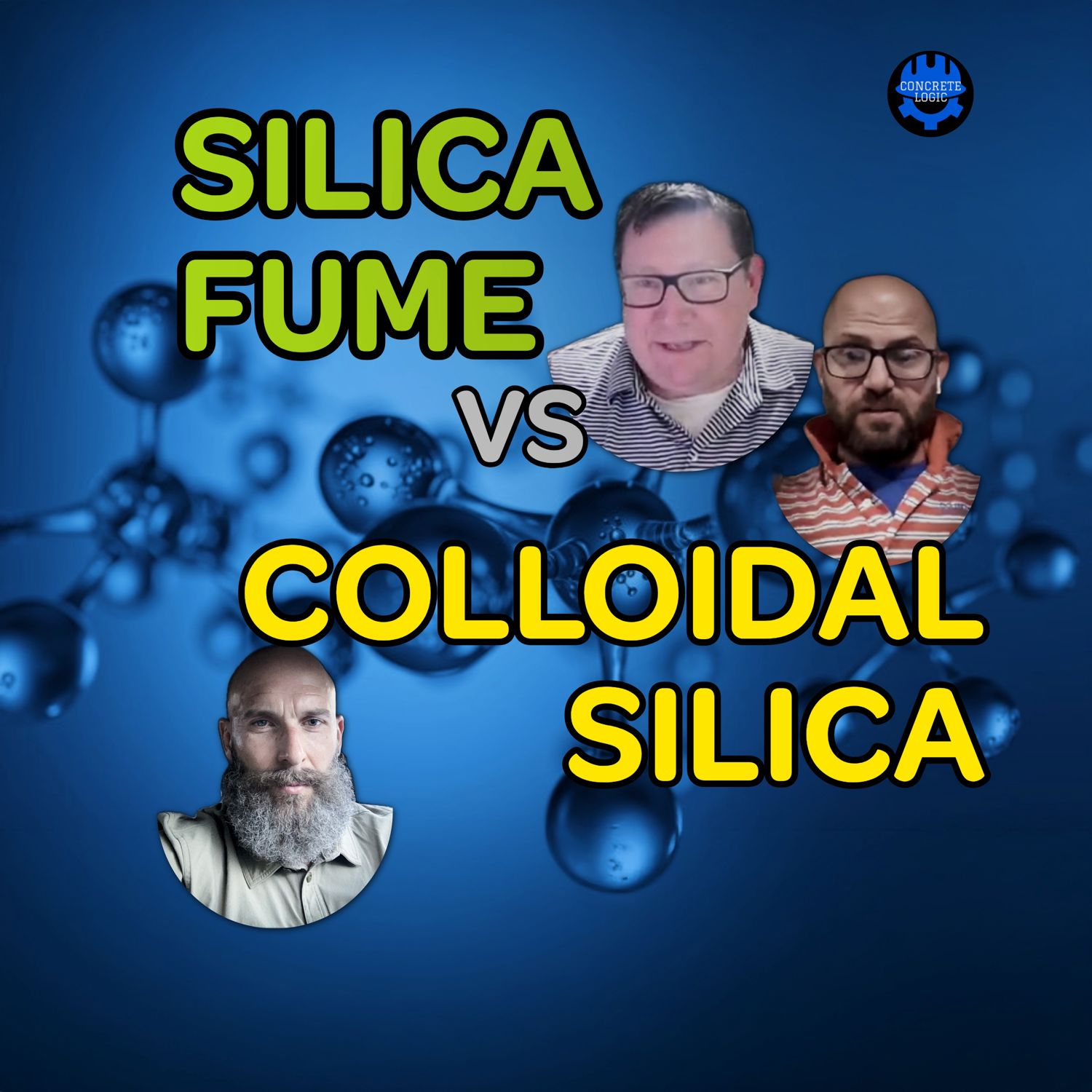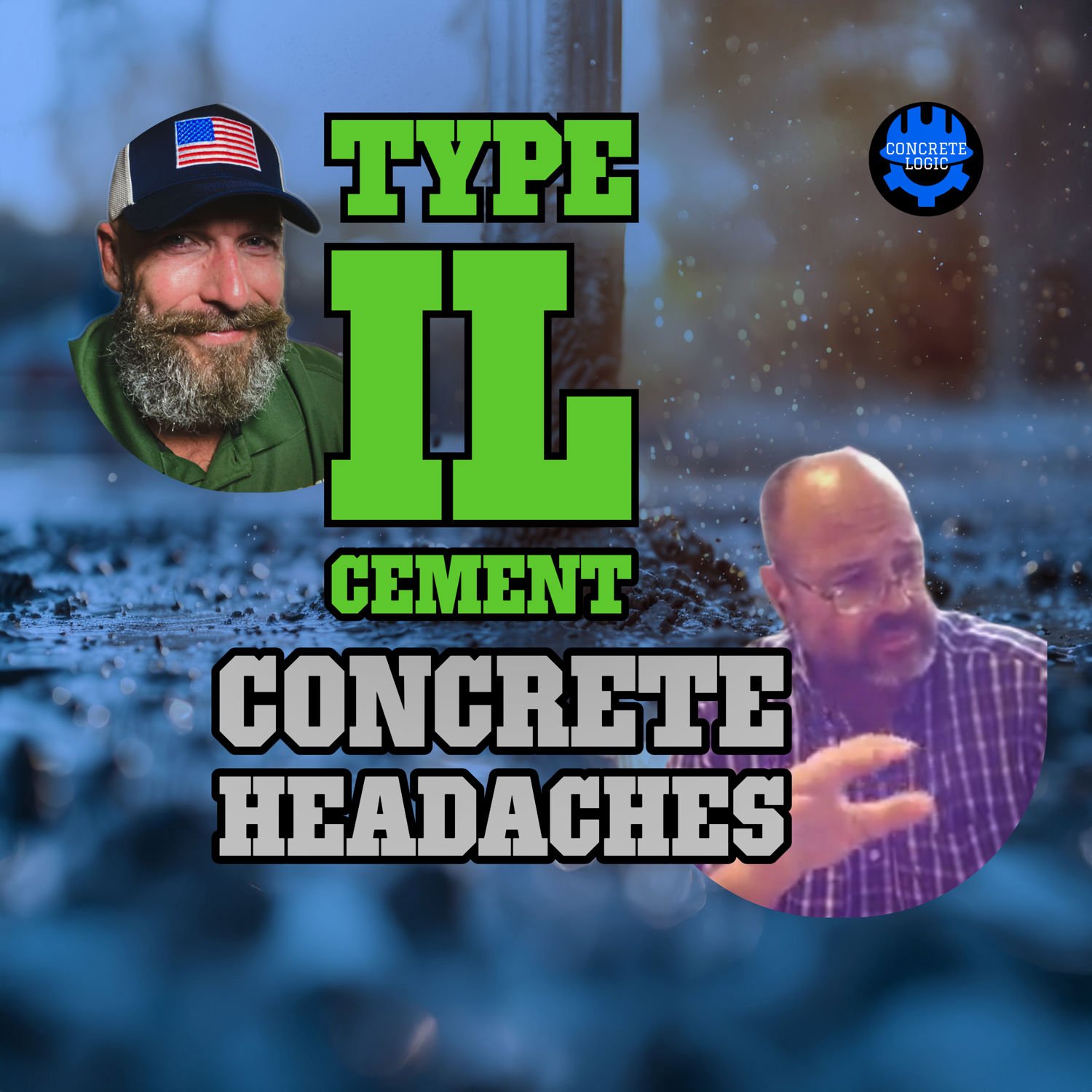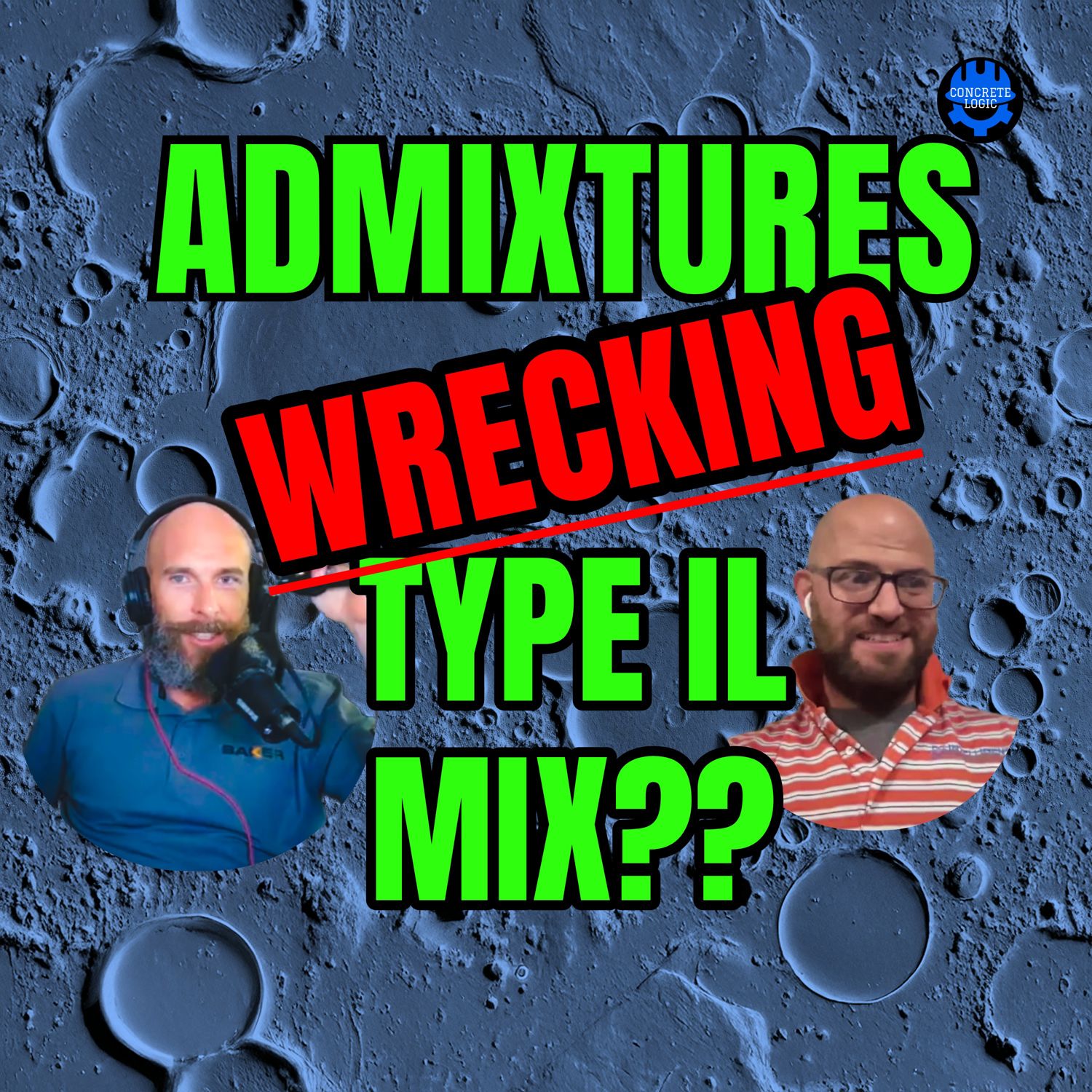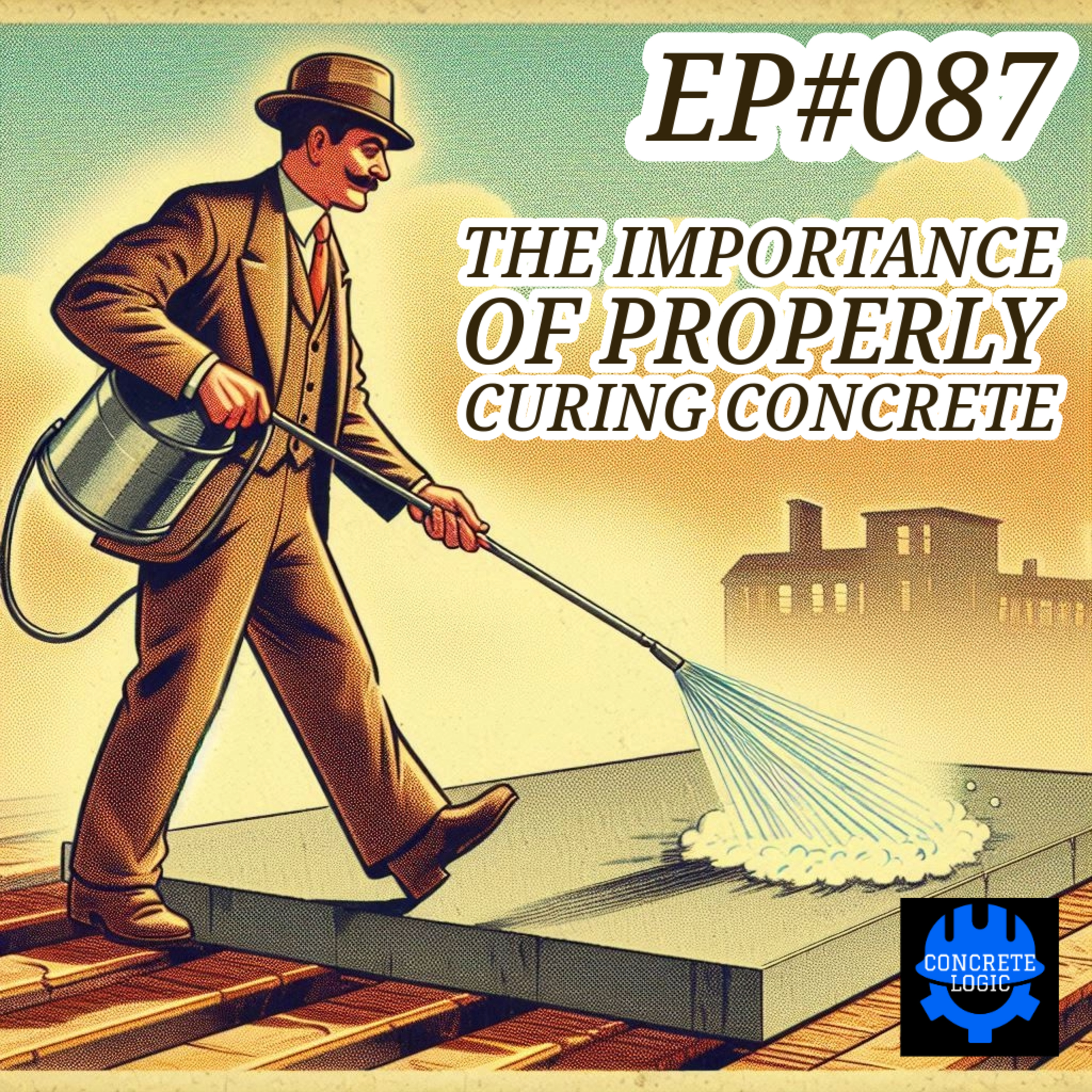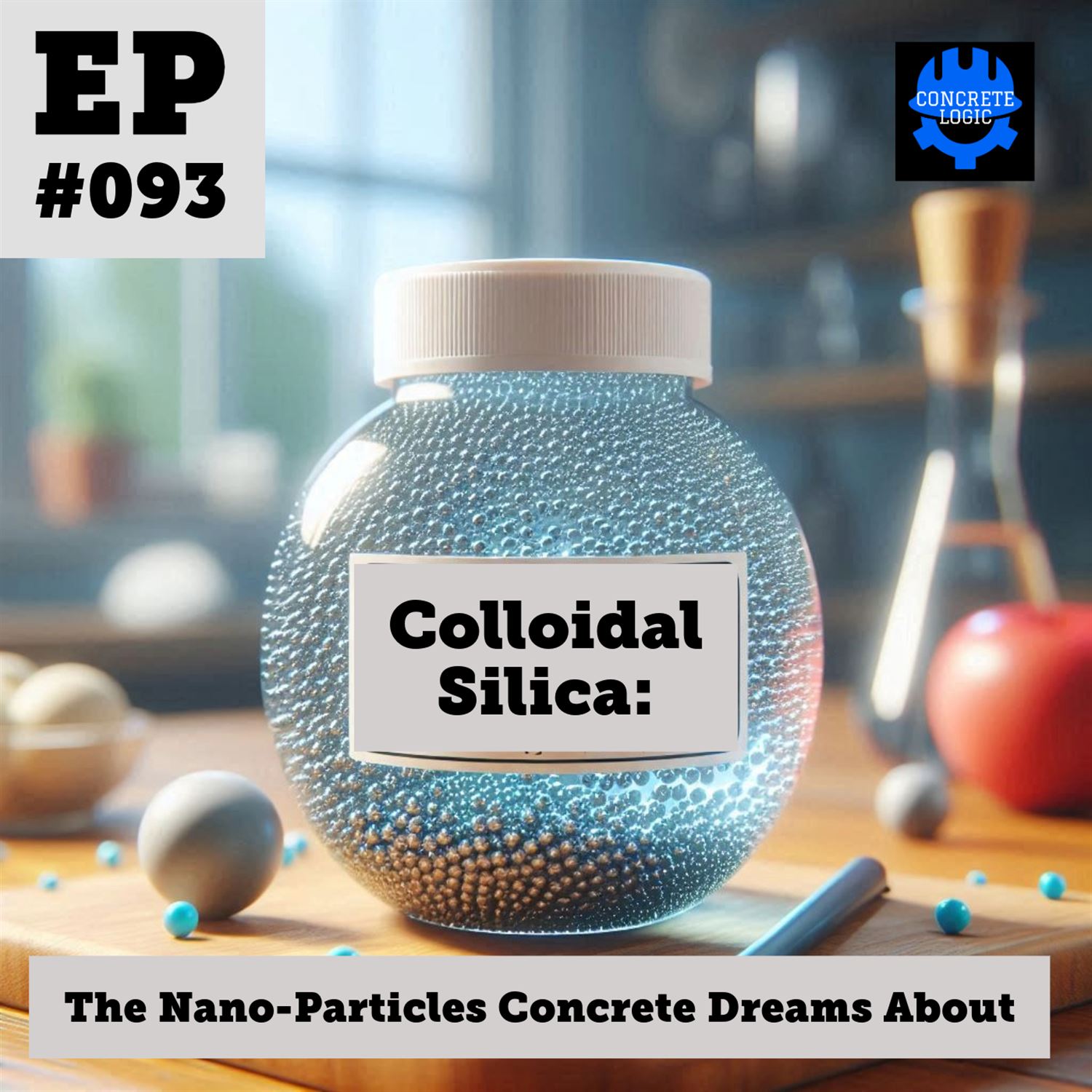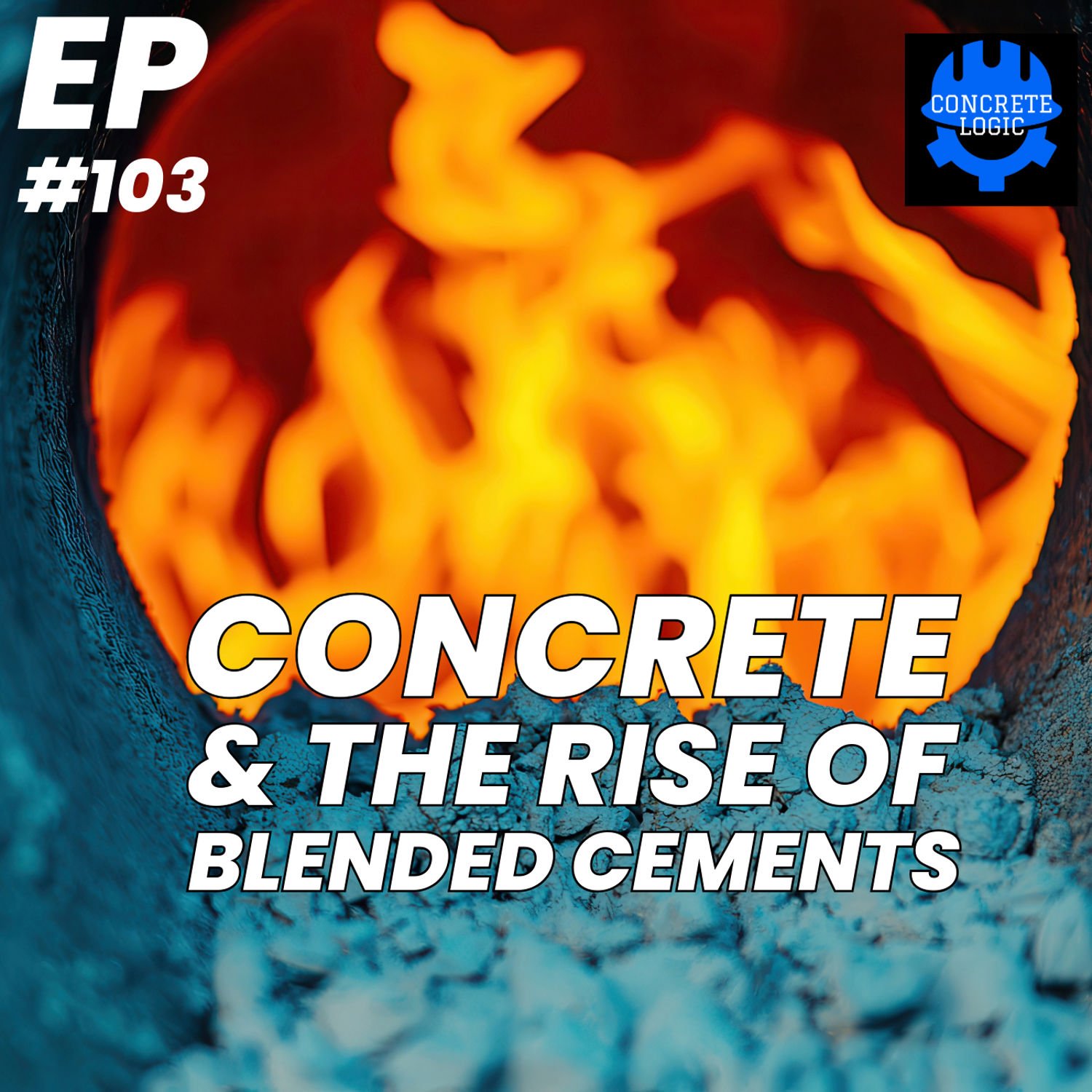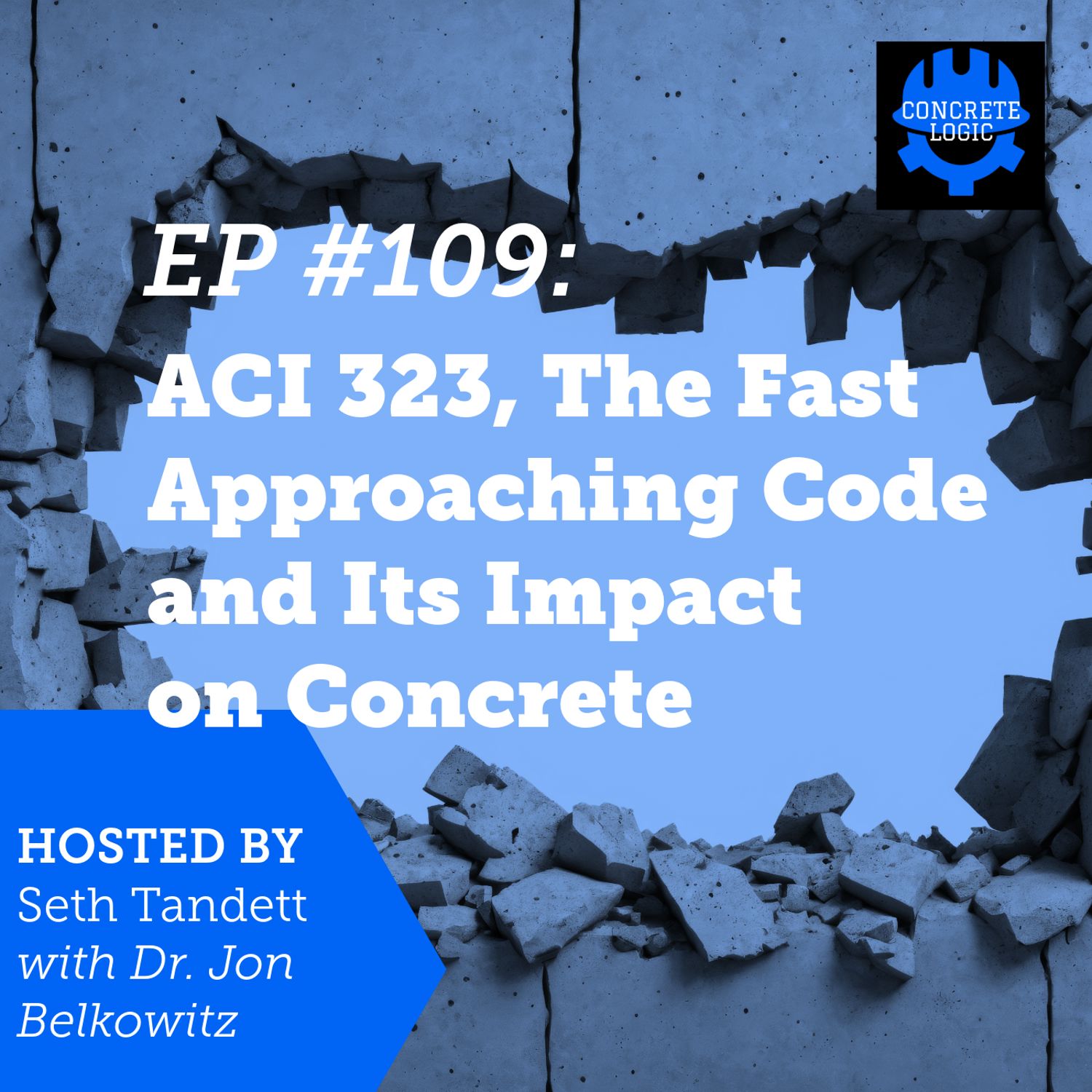EP #126: What the “State-of-the-Art” PLC Report Quietly Admitted About Concrete Performance
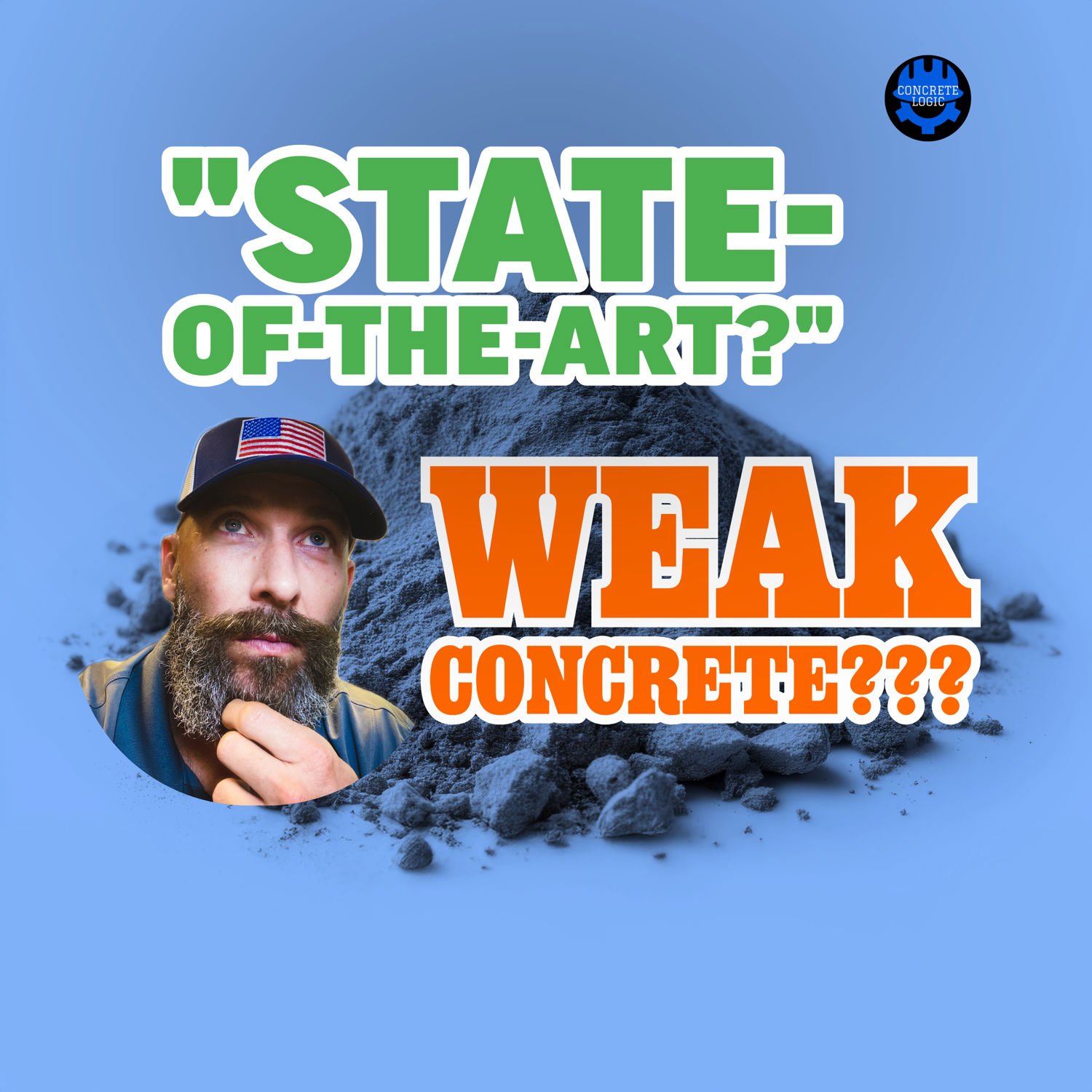
In this episode of the Concrete Logic Podcast, Seth Tandett breaks down the 2010 “State-of-the-Art Report on Use of Limestone in Cements” that helped launch Portland Limestone Cement (PLC) into the U.S. market. You’ll hear what the report got right, what it left out, and why Europe’s cement playbook may not fit American concrete. If you're in the industry, this episode will help you question the assumptions behind the biggest cement shift in decades.
Takeaways
- What happens to concrete strength when limestone content isn't properly optimized?
- Could higher limestone levels reduce your mix's sulfate resistance?
- How does increased limestone affect carbonation depth and long-term durability?
- Is PLC more likely to cause long-term shrinkage or expansion issues?
- Why are curing practices in Europe so different—and does it matter?
- How critical is mix design when using PLC instead of traditional cement?
- Are we relying on research we haven’t actually read or fully understood?
Chapters
01:57 Exploring the 2011 State of the Art Report
04:25 Positive Aspects of Portland Limestone Cement
05:49 Cautions and Concerns with PLC
13:25 Comparative Analysis: Europe vs. US Practices
19:20 Conclusion and Importance of Research
=============================
Take Your Knowledge Further – Join Concrete Logic Academy!
Gain access to expert video lessons, live Q&As, and professional development hours (PDHs). Learn what textbooks won’t teach you.
Start Learning: https://www.concretelogicacademy.com
Support the Podcast – Be Part of the Concrete Revolution!
Help us keep the Concrete Logic Podcast going strong. Your donation helps the entire concrete community get better and smarter.
Donate here: https://www.concretelogicpodcast.com
Want your company to sponsor the podcast? Learn how: https://www.concretelogicpodcast.com/p/partner-with-concrete-logic-podcast/
Producer: Jodi Tandett
Music by: Mike Dunton (Instagram: @Mike_Dunton)
Stay Connected & Watch More!
Host: Seth Tandett
Email: seth@concretelogicpodcast.com
LinkedIn: https://www.linkedin.com/in/seth-tandett/
YouTube: https://www.youtube.com/@concretelogicpodcast
Website: https://www.concretelogicpodcast.com
LIKE, SUBSCRIBE, COMMENT & SHARE for more concrete truth bombs.
Seth Tandett (00:00)And welcome to another episode of the Concrete Logic Podcast. And today we're going to do something a little bit different. No, no guests today. I wanted to review, I guess, aa paper that you see often times you see cited when it comes to type 1l cement or Portland limestone cement PLC and I just got curious I wanted to actually read one of these papers like I said is often time cited and just seekind of dig into it and see what it is. you're going to do that with me today. If we get some good feedback, we'll continue to do this. But I've been doing this on my own and thought I'd share what I found in this particular report. So with that, we'll get started here. Let me share a screen. So if you are...watching on YouTube. You can kind of follow along. If not, I'm going to do my best toexplain what we're doing here.So this paper, it's called the State of the Art Report on Use of Limestone and Cement at Levels of Up to 15 % by Tennes, Thomas, and Weiss. It was originally published in 2010 by the Portland Cement Association, and then it was updated in 2024 by the same authors.But what's kind of funny, I guess funny to me, in the 2024 report, it references this 2011 version. So I'm just going to stick with this old version, 2011 version, since the 2024 version is referencing it. Hopefully that makes sense. But yeah, that's...what we're gonna look at today. And essentially all I wanna do is I'm not going to give my opinion on it. I'm just pulling things that are in the paper. I assume most folks aren't reading these things. So if you're good, you know, I just went through and was.pulling out things that I thought were interesting. So.with that, let's move forward here. So yeah, here's the front of the paper here. Like I said, it's called the state of the art report on use of limestone and cements at levels up to 15%. Just a disclaimer here that these are, again, I'm not gonna give my opinion on anything.in this episode, but the views expressed are my own and do not reflect my employer's position. â This podcast is for educational purposes only, not engineering or legal advice. So please just keep that in mind as you're listening. â Like I said, â this report is oftentimes cited. âSo for example here, this is the NRMCA CIP 45 on Portland limestone cement. It references this report. This is a...This was from a cement manufacturer. They cited this paper as well. This was a document that they published not too long ago. I believe this is a 2023. And again, they referenced this report. And again, here's another one.â This was actually from the Federal Highway, I think was it FHA, Federal Highway Authority. âand they reference it as well.So â in the paper itself, âYou know, they tell us about the positives of...of PLC. So the positives of PLC, it outlines, it can be, you know, 15%, up to 15 % limestone can be used effectively and how increasing fineness and proper optimization can help maintain strength. There's lab results that are presented in the paper that match or outperform OPC or, you know,Portland cement, regular Portland cement. It highlights meaningful environmental advantages, reducing CO2 emissions by five to 15%, depending on formulation and application. And yeah, so those are the â positive aspects of â PLC that are presented in this paper.Again, so let's dig into some of the things that you're probably not hearing that were presented in this paper. So again, just wanted to present the positives that we hear about type 1L cement, Portland limestone cement, so PLC.But within this paper too, there's things in there that aren't so positive. So they caution â as well. So one of them is that the strength can drop if the limestone isn't optimized. this is a â figure â that is in the report. So if you look at this, they're showing, if you look at this red,â This â is a chart here. Essentially what it's showing you is the more limestone you, at some point, you put in too much limestone and you lose strength. So this is in the report. So they caution on that as well. â it demonstrates that both the limestone content and fineness influence strength outcomes. So again, it cautions withoutcareful quality control and proportioning strength reductions are possible, â particularly in mixes with high limestone content and insufficient grinding. So again, this is in the report.â Moving on, â so there's some information about sulfate resistance â decreases. in this, â again, here's another chart. â In the report shows that mortars with 20 % limestone experience higher expansion when immersed in a 5 % sodium sulfate solution, â especially with those with higher. âlimestone â content. So that's a lot of gibberish to me. â what this is indicating is â lower sulfate resistance in PLC mixes â can happen under aggressive sulfate exposure conditions. It's so.What happens is as you add more limestones, it may increase the vulnerability in environments like sulfate-rich soils or groundwater.So again, if the mix isn't optimized, â so sulfide resistance can lead to long-term deterioration. So.Again, not a good thing. Again, this is in the report. Next thing in here I want to point out, â carbonation depth increases. So this chart that's in the report shows that limestone content as it increases, carbonation depth also increases, especially it makes its design with equal water to submit. âratios. What this means is concrete may become more vulnerable to a pH drop and and steel corrosion over time, particularly if it's poorly cured, which we've talked about a lot on the podcast, or has lower strength. â So it's a trend that's noticeable when PLC is used without adjusting the mix to maintain compressive strength. This makes â curing and strength development even morecritical for long-term durability. This matters for long-term durability in exposed or reinforced concrete applications.Next is â shrinkage. So found this interesting here. This is a paragraph within the report and it's talking about, â it's actually talking about volume stability, but if you look within that paragraph, â something that stood out to me, it states that the total.deformation due to creep and shrinkage over 360 days was significantly lower â by 17 % on average for concretes produced with Portland cement compared to those that were produced with Portland limestone cement. The authors concluded that this was due to the reduced volume of cement gel available to resist the compressive stress in concrete containing â PLC orPortland Linestone Cement. So, â you know, the study, this paper â actually cites other papers, other studies that are done, that's what this is doing right here, and this particular study warns that PLC essentially may be more prone to long-term volume change. â So, you know.If the concrete volume is changing, it's shrinking. That can lead to cracking, curling, things that are not aesthetically pleasing to the eye, or even serviceability concerns. the slabs or pavements or whatever it is â won't hold up. It won't perform like it's designed.â Next one was a permeability. â So the â permeability â results are kind of mixed in this report. Again, â like I started with, there's positives pointed out in this report, but there's also negatives and â things that they're cautioning us about by using Portland limestone cement or type 1L. âSo this, again, this â report is pointing to another study. And in this study, they found that increasing limestone content raised chloride diffusion, especially at higher water cement ratios. â So that's what this first table show in here. And then, but another study, â the table below here, âit showed that PL mix is blended with 30 % slag, had even lower diffusion than traditional Portland cement. â So again, confusing and kind of contradicting studies here that, you know, Portland limestone cement or PLC can increase permeability if not properly optimized, a common theme in this paper. But then you could offset that with âSEMs like slag, â which may actually reduce the permeability. again, it says performance depends on mix design and exposure conditions. So again, contradictory information here.Another thing, we often hear this, that Europe has been using Portland limestone cement for decades. So why isn't the US on board? So just a couple things that the paper points out again.So Europe has a different climate than the US. although they â used it longer than the US has, â their whole â carrying practices are different than ours. â And they also â have a different labor force as well, different trained labor force.So, â but even in this report, â you know, acknowledges Europe's success with PLC. But it does say given that European and Canada, it also talks about Canada requirements are based on limited studies, â at least back then when this initial report was put out. â Consideration should be given to establishing alternate.criteria to assure that limestone used in Portland cement will not compromise performance.There's also other things too, some things I â thought were interesting. â did not, I didn't, I never worked in Europe obviously, I've done my entire career in the US. the, â Europe uses performance based specifications, â which â this report points out, which you know, â we don't use that in the United States. You know, it's more prescriptive.â specifications. âSo that's a big difference â and must be considered when someone points out, they've used Portland limestone cement for decades. â Again, I mentioned this already, I kind of jumped ahead, but â the curing practices are different. So moist curing is more widely enforced in Europe. âFor instance, â in Germany or the Netherlands, it's not â uncommon to see strict enforcement of seven-day moist curing, especially for public infrastructure, which to be fair, we do have that in the US. â I've seen specs for â public â jobs where it clearly states a seven-day moist cure, but I don't think that it's as widely adopted.â as it is in Europe. At least that's what the paper is stating.And the big deal about that is that using PLC, it's more sensitive to that. And we've talked about that on a podcast before. It's more sensitive to your curing practice. â So that's something to note. Again, I mentioned this, â Europe has milder â climates. âYou know, the coast of France is much different than, you know, Michigan winters or Arizona sulfates or the humidity in the Mid-Atlantic or the Gulf Coast. So, again, â the paper points this out, but I'm just giving you some examples there. The construction timelines â are slower. âparticularly in public works.And yeah, so.Yeah, so there's difference in our construction methods and our labor force and those in the climate. we got to consider that. But another thing I thought was interesting again, I found this figure or chart in the paper. And what was interesting is, you know, I guess me,I when I hear people say, they've been using PLC in Europe for decades and they make it sound like that's all they use. But back when this report was published, â if you're watching on YouTube, I'm showing â a chart here where it shows all the different cements that are used in Europe â on the study. And thisthis particular study that the paper's referencing is from 2007. there's essentially they're showing one, two, three, four, five, six, seven, eight, nine, 10 different cements that are used in Europe, including Portland cement. But Portland limestone, it shows the trend of usefrom 1999 to 2004 and back in 1999 Europe used It shows 15 % and then by 2004 it's 31 % but that's So it's only used about not even a third of the use cement use in Europe so I thought I thought that was interesting andMaybe I was naive and I thought when they say, hey, know, Europe uses this stuff, I was thinking it was used a lot, but it, you know, it wasn't widely adopted back when this report was initially put out.So â yeah, so I mean, essentially the takeaways from this report is âYou know, again, this this initial report was back in 2011 and I know we're in 2025 now and that report has been updated last year in 2024.But the 2024 version is again, it references 2011. to me, it's a...it's important to read these documents, even these older documents, because those are the ones that kind of laid the foundation for us to make this change to type 1l cement.â So I think it's important to read these documents and see what's within them. Because again, like I'm pointing out today, there are positives. It points out the positives. But there are some cautions or negatives in there that we need â to take a look at. And a lot of these studies are lab-based. âThere's not a lot of US specific data. I know the 2024 is, and maybe we need to go look at that one and see what they have. the data is going to be fairly new because we haven't been using it â that long. Even if they said, back in 2011 when this paper was published initially,we â were using limestone in the paper itself, you know, it makes reference to, hey, even in the US at the time, we were using 5 % limestone. And so, you know, limestones be around. you know, now we're using a lot higher percentage of that than we were back then. you know, we're up to, you know, depending on where you are in the country, up to 15%.So, but â yeah, so again, I'm not trying to be â critical. just think it's something that we can do â to look at these papers and just actually see what's in them. I know it's not a very exciting thing to do. â And I appreciate the folks that do this for a living. âand are able to read these things and stay awake. It's kind of brutal going through this, but anyways, I appreciate you guys â sticking with me today. â again, if you all, â you know, let me know if this is something you want to continue to do and we'll continue to look into these documents â and see what we can find together.And yeah, so until next time, let's keep it concrete.










